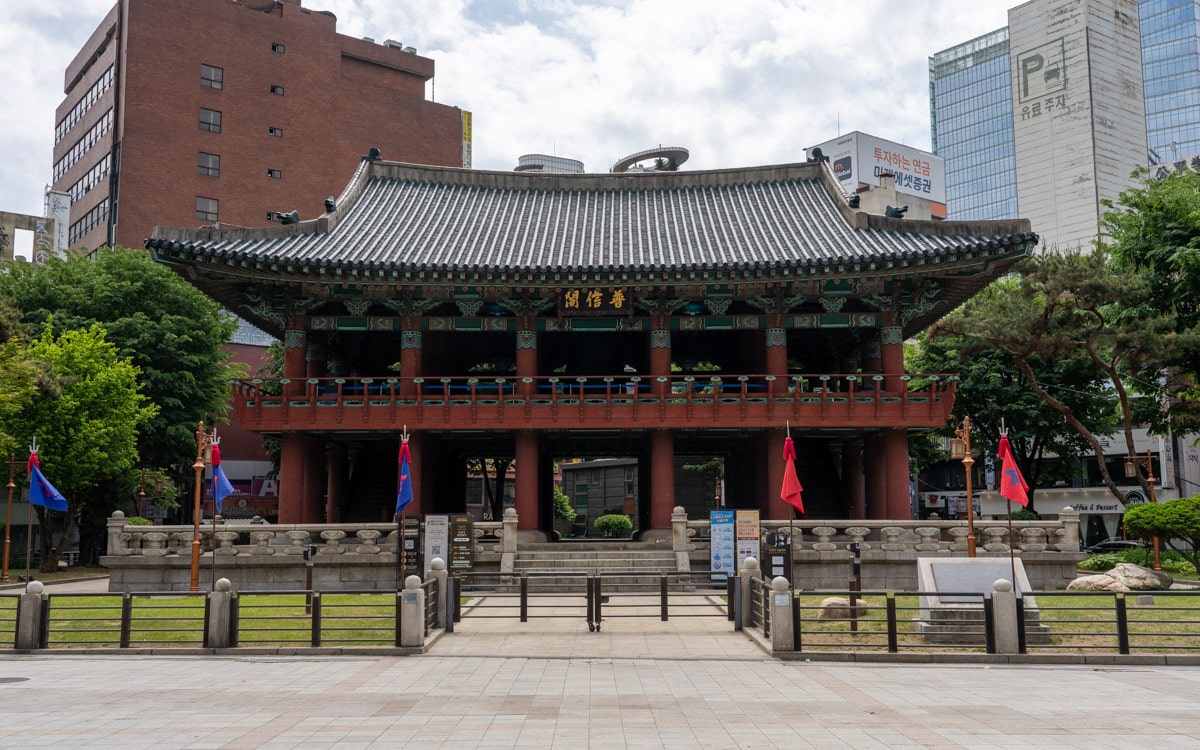
Located in the heart of Insa-dong is Bosingak Belfry. This historic bell pavilion, or bell tower, stands out in a sea of modern skyscrapers in the Jongno District. The Jongno District gets its name from Jongno, a major road which runs west to east through the heart of central Seoul. In English, Jongno means “Bell Street.”
The original bell pavilion dates back to 1396 during the reign of Taejo, the first king of the Joseon dynasty. During this period, the king ordered the construction of a fortress wall (Hanyangdoseong). The purpose of the wall was to protect Hanyang (present day Seoul) from invasions. When completed, the fortress wall had eight gates. This included Sukjeongmun Gate, Heunginjimun Gate (Dongdaemun Gate), and Sungnyemun Gate (Namdaemun Gate). These gates allowed citizens in and out of the city while keeping invaders out.
Each morning at 4:00AM, the bell hanging inside the pavilion was rung 33 times. Known as paru, the gates along the city wall opened at this time and people could pass through. The 33 rings represented the 33 cheon (heaven) in Buddhism. At the end of the day, at 10:00PM, the bell was rung 28 times. Known as injeong, at this time, the gates along the city wall closed. The 28 rings represented the location of the stars in the heavens. The bell was also rung during times of emergency such as fires or invasions.
The pavilion has gone by different names over the years. This includes Jongnu, Jonggoru, Jonggak, and Ingyeongjeon. Also, over the centuries, the pavilion has suffered the consequences of fires and wars. But each time, it was rebuilt. The gate was rebuilt once again in 1895 under the rule of King Gojong and given the name, Bosingak. The pavilion as seen today dates back to 1979.
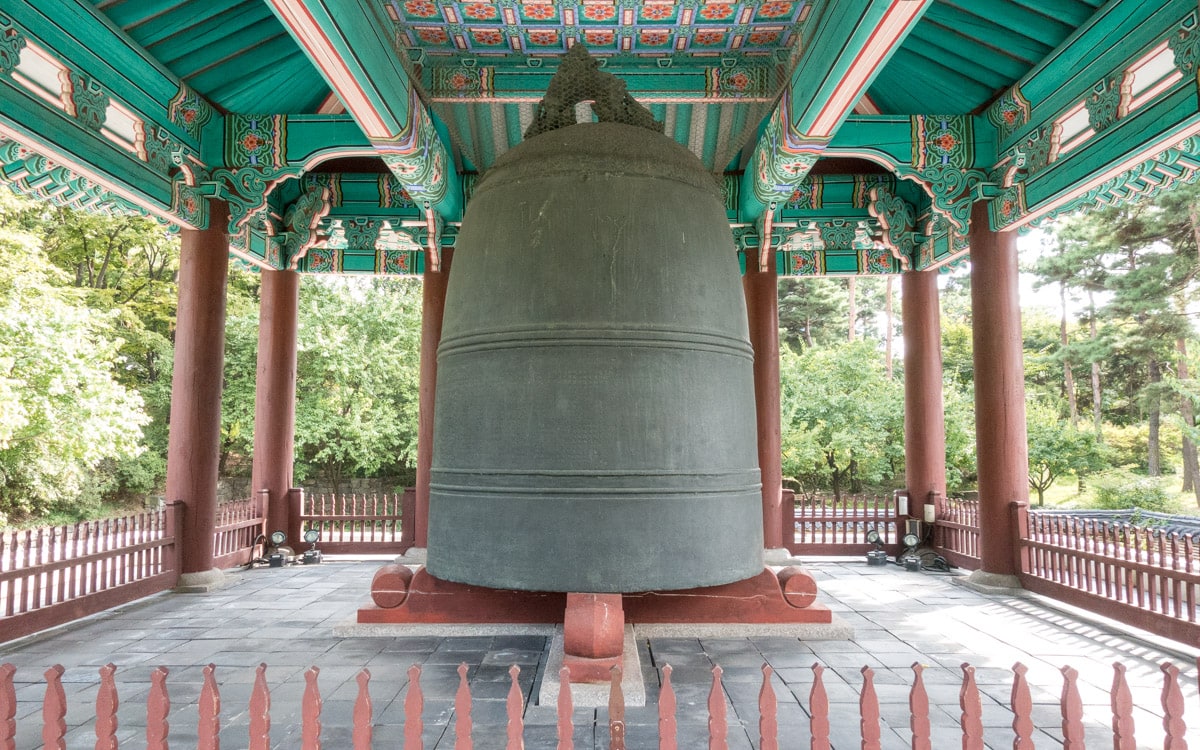
The original bronze bell which hung in the pavilion melted during a fire in 1455. In 1468, a new bell was recast and placed inside the pavilion, where it hung for centuries. Today, the bell is on display at the National Museum of Korea. The bell hanging in the pavilion today dates back to 1985.
Each year on December 31st, a New Year’s Eve event takes place at the pavilion. The event, which attracts thousands of people, features musical performances, celebrities, and a bell-ringing ceremony. The ringing of the bell at midnight symbolizes hope and happiness for the new year.
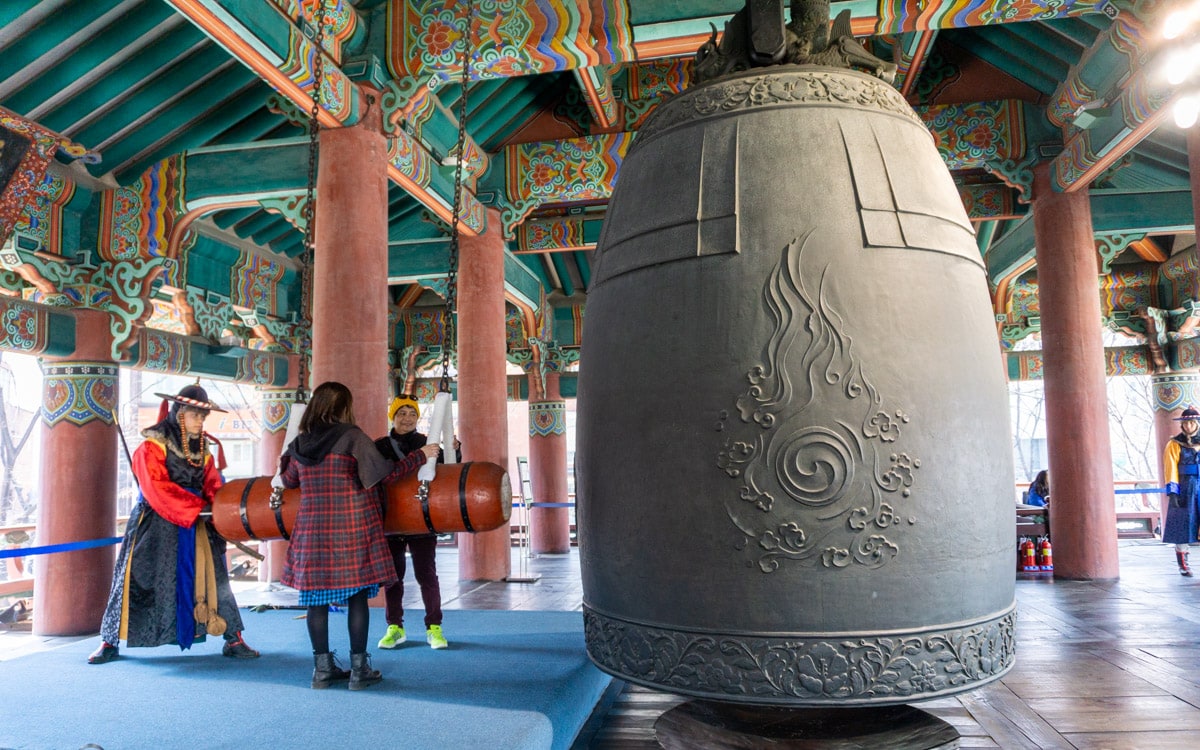
Everyday, except Mondays, visitors to Bosingak Belfry can take part in a bell tolling ceremony. This ceremony, which takes place between 11:00AM and 12:20PM, allows visitors to experience the ringing of the bell. During the ceremony, with the help of the royal guards, visitors are allowed to ring the bell 12 times, signaling noon. The ceremony is free and open to all visitors. Reservations are required and can be made by visiting http://royalguard.or.kr/.
Located nearby are many sights of interest including Cheonggyecheon Stream, Tapgol Park, and Gwanghwamun Square.
Bosingak Belfry Information
Hours
24 hours
Admission
Free
How to Get Here
Take Subway Line 1 to Jonggak Station (Exit 4)
Map
Nearby Sights
Seung-dong Presbyterian Church
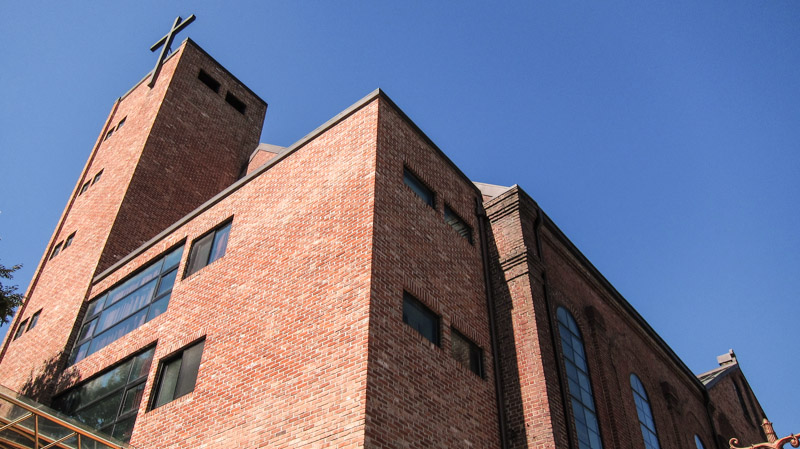
Seung Dong Presbyterian Church, located near Insadong, was established in 1893 by Samuel Foreman Moore (1860-1906). Over the years, the church has been relocated and renamed many times. Before being renamed Seung Dong, it has been known by as Gondanggol, Jungang, and Baekjeong.
Cheonggyecheon Stream
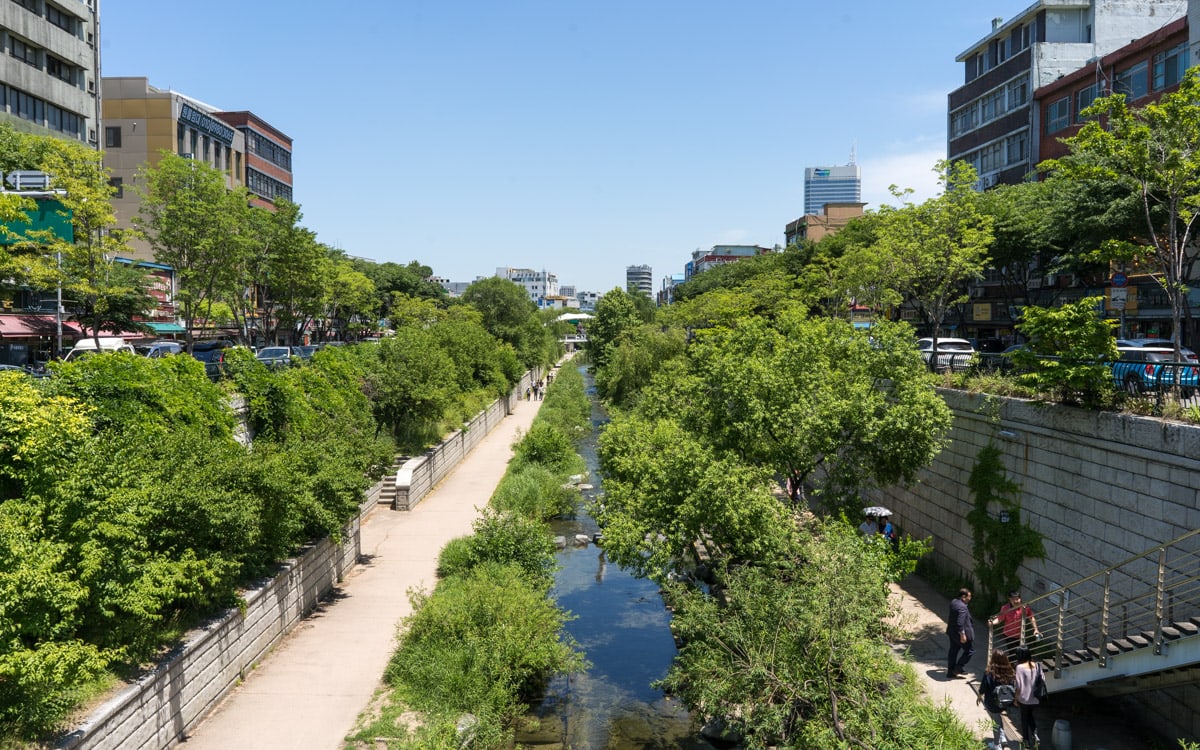
Cheonggyecheon Stream is an 8.4 kilometer (5.2 mile) waterway and public space that runs from west to east through the heart of downtown Seoul. During the Joseon Dynasty, the stream was known as Gaecheon, meaning open stream.
Tapgol Park
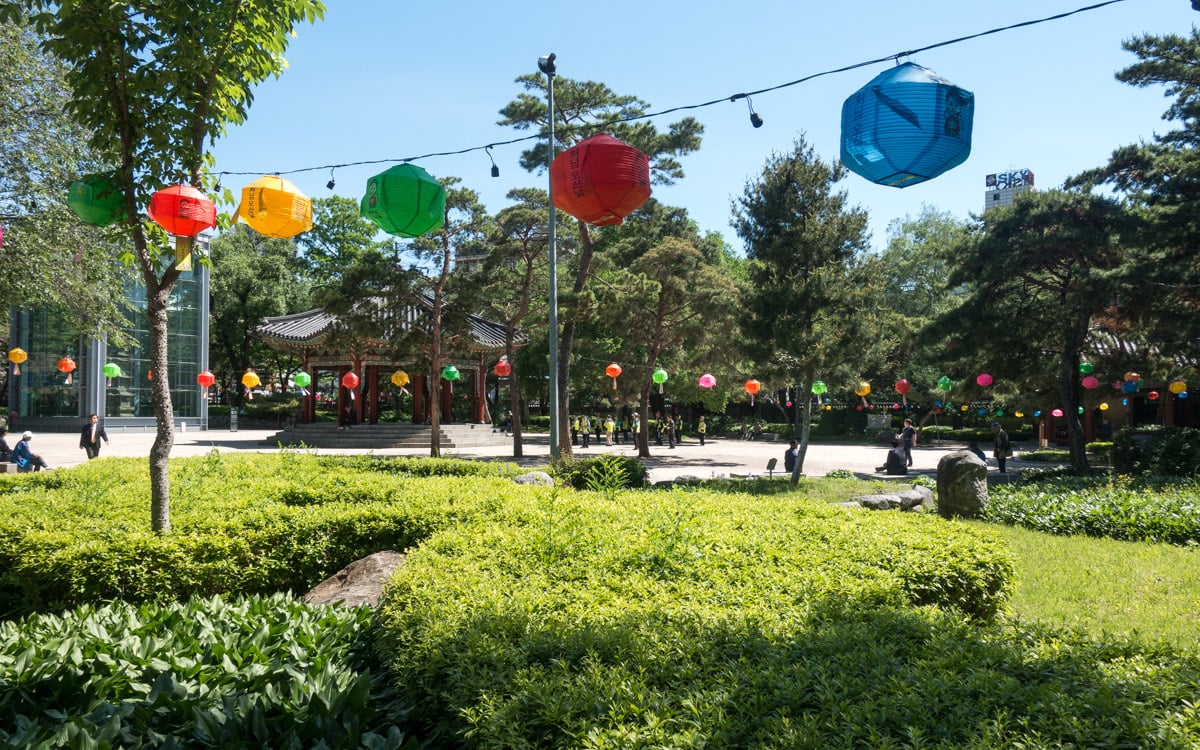
Tapgol Park is a public park that lies at the center of Seoul, near Insadong. It was here in 1919 where the March 1st Korean Independence Movement began. This movement called for the independence of Korea from Japanese rule.
Jogyesa Temple
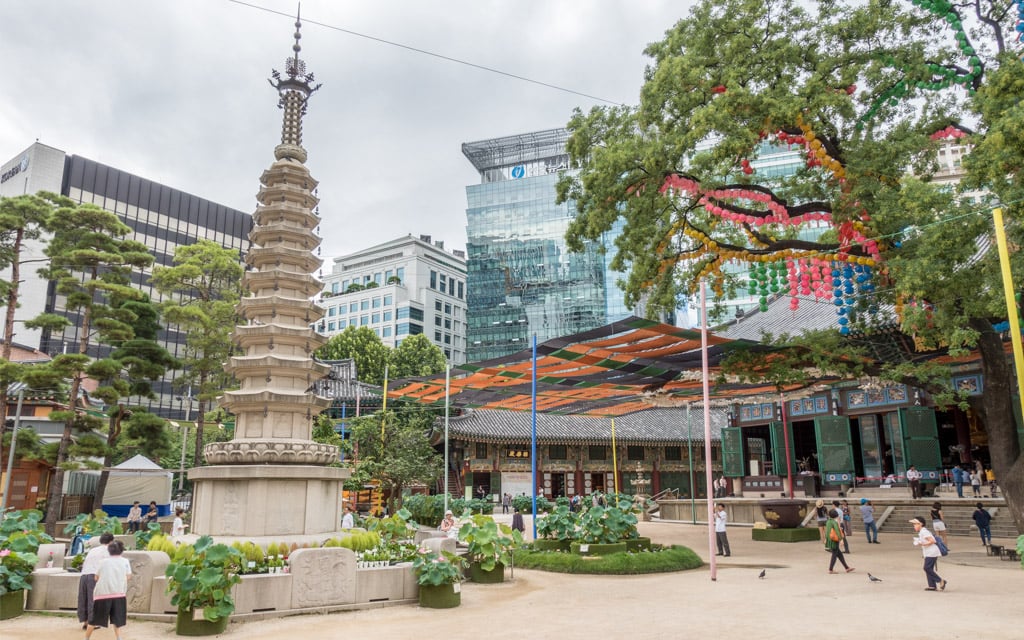
Jogyesa Temple is one of the most important Buddhist temples in Korea and a symbol of Korean Buddhism. It is located in the heart of the city near Insadong. Since 1936, it has been the head temple of the first district of the Jogye Order of Korea Buddhism.
Ssamziegil
Ssamziegil is a colorful shopping and culture complex in Insadong that features cafes, galleries, and workshops that mix modern and traditional Korean styles.
Insa-dong
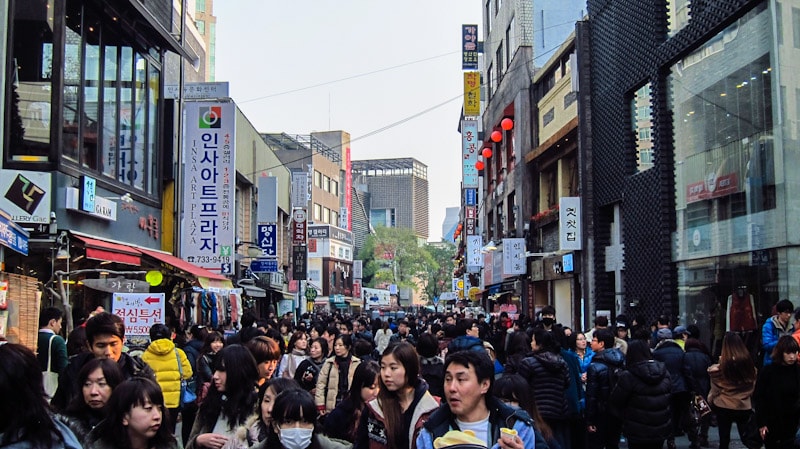
Insadong is a popular neighborhood in the heart of Seoul that is often visited by locals and tourists wanting to experience traditional culture of Korea. Streets and narrow back alleys are lined with art galleries, wooden tea houses, restaurants, cafes, and small shops selling arts and crafts. The main street, Insadong-gil, runs for 700 meters from Tapgol Park in the south to Anguk-dong Rotary.
Additional Resources
Viator by TripAdvisor
Viator is a popular online platform that helps travelers book tours, activities, and unique experiences worldwide, including in Seoul. It connects users with a wide selection of options – from sightseeing tours to cultural events and outdoor adventures – all offered by local providers.
Book Recommendations
For an immersive guide to Seoul, many travelers choose to bring a book along. Fodor's Seoul, for example, offers detailed recommendations on sights, restaurants, maps, and travel tips.
Learn more about book recommendations
Rakuten
Save money while exploring Seoul with Rakuten's cashback program. Book your hotels or other services through Rakuten and enjoy cashback rewards and exclusive deals.
If you sign up using the link below, you could earn $30 cashback on your first purchase over $30.
Klook
Klook offers discounted tickets and reservations for various attractions and services in Seoul, from theme parks and museums to tours and transportation options.
If you sign up using the link below, you will get $5 off your first order.
Last Updated on Jul 2, 2023